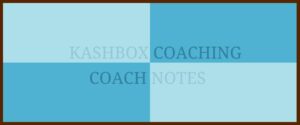Q1: What distinguishes analytical minds from creative minds?
A: Analytical minds tend to be logical, detail-oriented, and data-driven. They excel at breaking problems down into manageable parts and favor structured, methodical approaches. In contrast, creative minds are intuitive, big-picture thinkers who thrive on innovation, abstract concepts, and exploring multiple possibilities simultaneously.
Q2: Why do analytical and creative thinkers often face communication challenges?
A: The challenges typically stem from their differing thought processes and priorities. Analytical individuals may focus on precision and measurable outcomes, while creative individuals prioritize imaginative exploration and abstract ideas. These contrasting approaches can lead to misunderstandings, as each group may struggle to appreciate the other’s perspective without deliberate effort.
Q3: What strategies can help bridge the communication gap between these two groups?
A: Several strategies can improve communication:
- Establish a Common Language: Develop shared terminologies that translate technical details into accessible concepts.
- Encourage Active Listening: Ensure both parties genuinely listen to each other, asking clarifying questions when needed.
- Use Visual Aids: Diagrams, mind maps, and data visualizations can help translate abstract ideas into tangible concepts.
- Set Clear Objectives: Define common goals and outcomes to align analytical and creative inputs towards the same targets.
- Create Structured Brainstorming Sessions: Combine open ideation with structured processes to harness creativity while grounding ideas in practicality.

Ready to Find Your Perfect Kashbox Coach?
Every executive and business leader has unique strengths and faces specific challenges. That’s why we offer a diverse team of experienced coaches, each with specialized expertise in different areas of leadership coaching.
Click the button below to match with a Kashbox Coaching leadership coach who can best help you unlock your full potential.
Q4: How does active listening improve communication between analytical and creative minds?
A: Active listening involves entirely focusing on the speaker, acknowledging their points, and responding thoughtfully. This means asking for examples or clarifications on abstract ideas for analytical individuals, while creative individuals benefit from understanding the data and logical reasoning behind proposals. This mutual effort builds respect and a clearer understanding of each other’s viewpoints.
Q5: What role do visual tools play in facilitating better communication?
A: Visual tools such as charts, graphs, mind maps, and infographics can bridge the gap by:
- Translating complex data into digestible formats.
- Illustrating abstract concepts in a way that appeals to creative thinkers.
- Creating a common visual framework that both groups can refer to fostering a more precise, shared understanding of ideas and plans.
Q6: How can team leaders foster an environment that supports effective communication between analytical and creative individuals?
A: Leaders can create a collaborative culture by:
- Promoting Diversity of Thought: Recognize and reward analytical rigor and creative innovation.
- Facilitating Cross-Functional Meetings: Encourage interactions between teams with different strengths to share perspectives and solutions.
- Providing Training: Offer workshops on communication techniques, conflict resolution, and understanding cognitive styles.
- Encouraging Empathy: Help team members appreciate the value of both approaches and understand how they complement one another.

5 Powerful Secrets of High-Performing Leaders
✓ 4 Strategic Wins for instant clarity and execution
✓ Beat Parkinson’s Law to dominate your schedule
✓ Optimize Your Energy for unstoppable productivity
✓ Read to Lead to accelerate personal and career growth
✓ Proven Learning Method that cements breakthroughs
Q7: How does empathy contribute to better communication between these two cognitive styles?
A: Empathy allows individuals to step into the other’s shoes, appreciating the unique strengths and challenges of different thought processes. When both analytical and creative minds empathize, they are more likely to approach discussions openly and be willing to adapt their communication style, leading to a more collaborative and innovative work environment.
Q8: What benefits can organizations expect from improved communication between analytical and creative minds?
A: Enhanced communication can lead to:
- Balanced Decision-Making: Combining data-driven insights with innovative ideas for comprehensive solutions.
- Increased Innovation: Leveraging diverse perspectives to generate breakthrough ideas that are both visionary and executable.
- Stronger Team Cohesion: Building mutual respect and a collaborative culture that values varied contributions.
- Enhanced Problem-Solving: Integrating different approaches to tackle challenges from multiple angles.
- Improved Business Outcomes: Streamlined processes and more effective strategies that drive growth and competitive advantage.
By implementing these strategies and fostering an environment of mutual respect and understanding, organizations can harness the full potential of both analytical and creative minds, turning diverse cognitive styles into a strategic advantage.

As the President of Kashbox Coaching my mission is to empower leaders by highlighting their unique strengths and unlocking their leadership potential – to develop all quadrants of their Kashbox (Knowledge, Attitude, Skills, Habits)!
For over 15 years, Hannah Kay Herdlinger has empowered individuals to unlock their full potential and design fulfilling careers and lives. She championed leadership at Sheryl Sandberg’s Lean In and Arianna Huffington’s Thrive Global.
The KASH Method, created by the founder of Kashbox Coaching, offers leaders a unique path to success and positive change. It goes beyond traditional coaching by integrating leadership development, resilience training, and the power of connection to elevate client experiences.
Hannah Kay’s passion is igniting positive and lasting transformations. Through executive, corporate, and individual coaching, she helps clients align professionally. Her journey is a testament to the transformative power of coaching. Her unwavering commitment to empowering others is evident in her own growth and the success of her clients.












